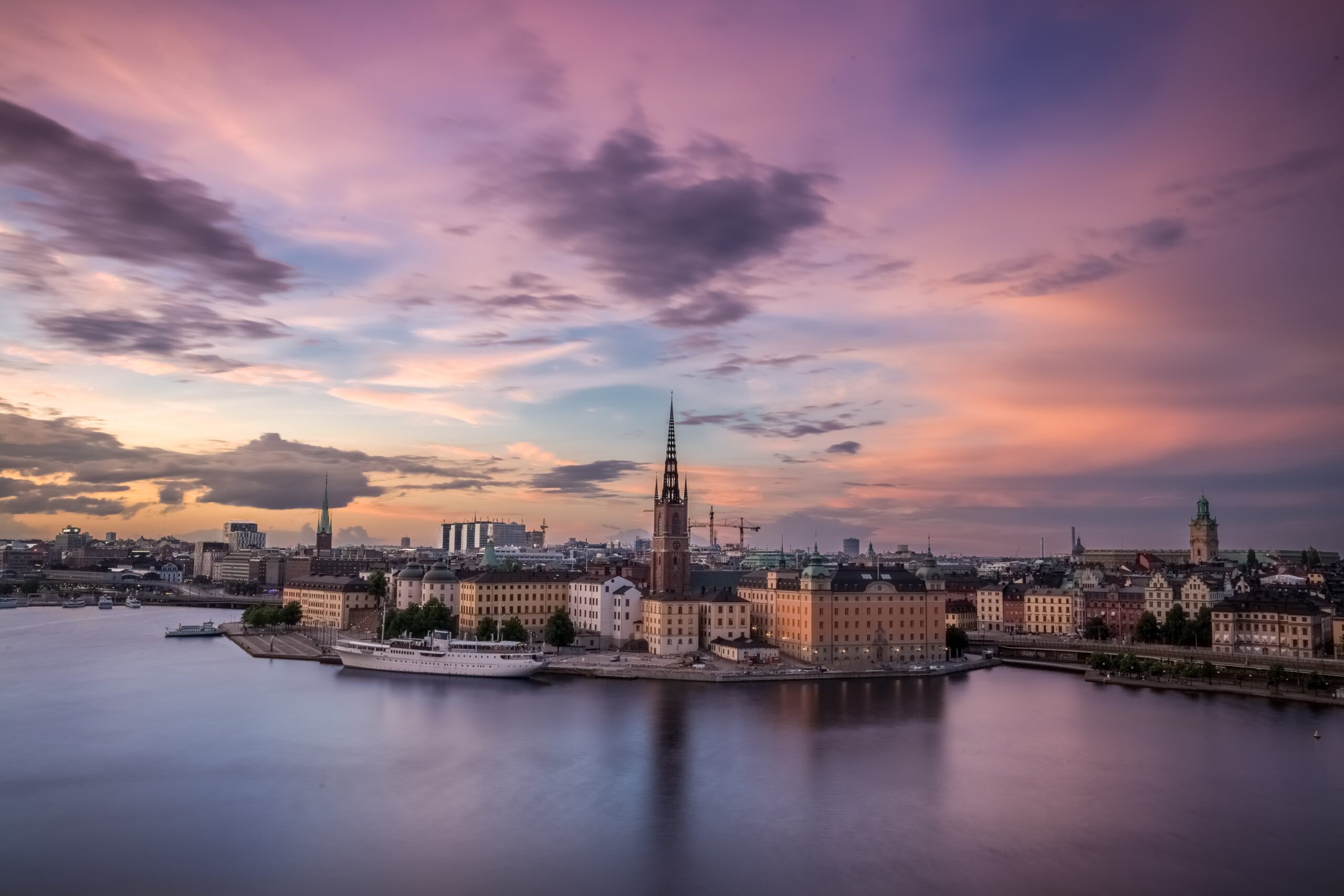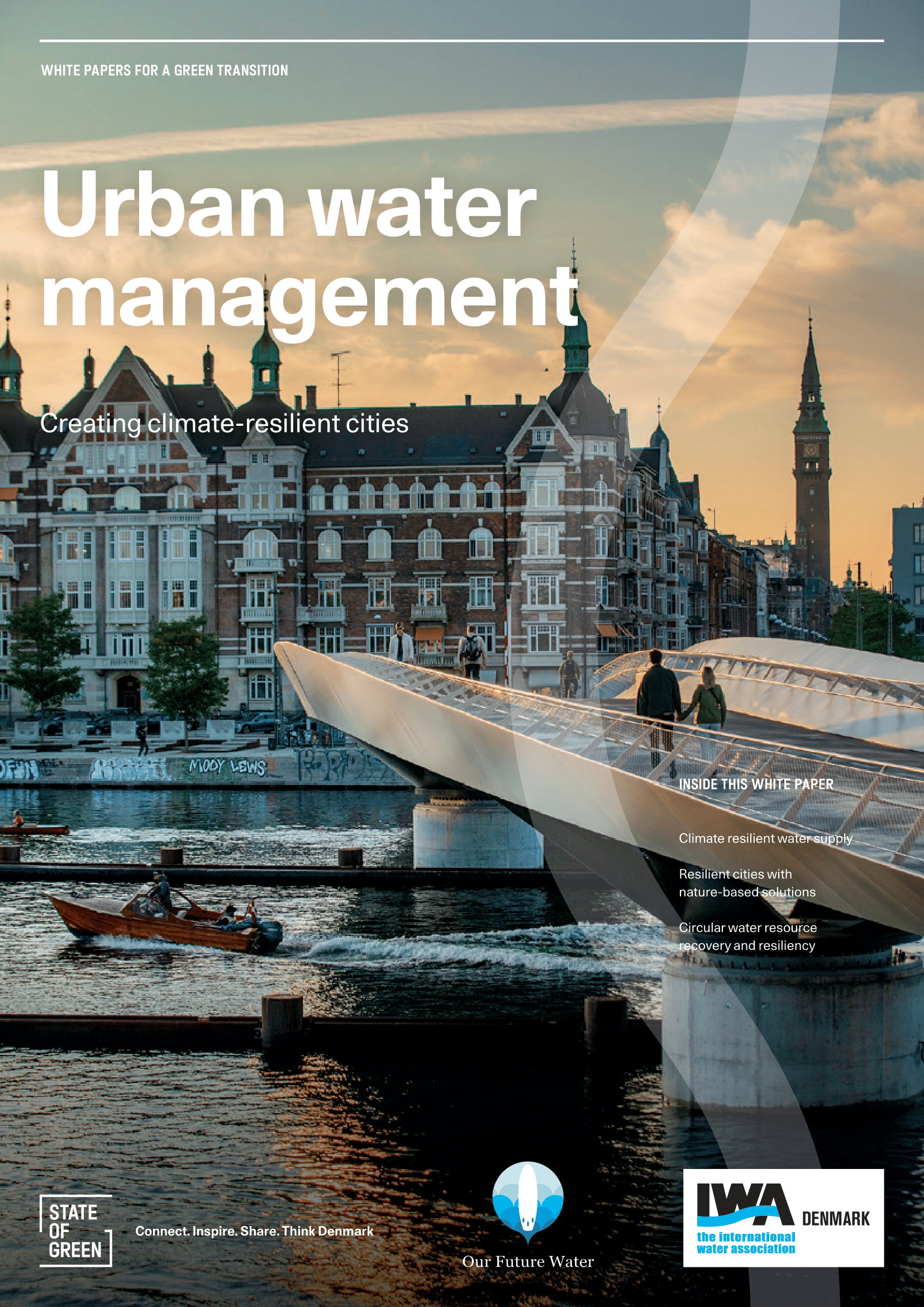Download our publication on urban water management today
This article is part of our publication ‘Urban water management’.
Download nowPerspective
Urban water management
Water management


Today, more than half of the world’s population live in cities. The United Nations (UN) estimate that by 2050, this will increase to 70 %. According to World Economic Forum’s Global Risk Report 2020, water-related issues such as extreme weather, natural disasters, drought, and failure to adapt to climate change are among the greatest global risks to the well-being and prosperity of mankind.
Ensuring basic delivery of services for people and production, while at the same time protecting the surrounding water resources is a key task for urban water managers. This must go handin-hand with planning and managing well-functioning cities that are resilient, healthy and attractive places to live. Urban water managers all over the world share these challenges. In Copenhagen – the host city of the International Water Association’s (IWA)
World Water Congress & Exhibition in 2022 – and other Danish cities, water managers are constantly working towards creating better cities, and they are committed to sharing experiences with other cities worldwide.
Water governance, technology development and daily operations in Denmark is based on a high level of trust, engagement and enforcement of regulations which ensure public legitimacy. Over the past 50 years, a professional effort has been made to streamline and further develop the water sector to provide environmental benefits, effectiveness, and efficiency and to support sustainability efforts. And in recent years, to also contribute to an overall green transformation of society in a manner which promotes economic growth and employment.

This article is part of our publication ‘Urban water management’.
Download nowA call for sustainability is seen all over the world. Many of the Sustainable Development Goals (SDGs) directly or indirectly depend on finding sustainable solutions for water, and there is even a dedicated goal for clean water and sanitation (SDG 6). The SDGs are crucial to the overall vision of Water for Smart Liveable Cities. A strive for liveability through use of multifunctional blue-green infrastructure, which offers many benefits to urban society, including improved local climate resilience through reduced combined sewer overflow and flooding, improved urban amenities, and decreased environmental life cycle impacts of water infrastructure. This strive is embedded in IWA’s 17 Principles for Water-Wise Cities.
Digitalisation, which is currently transforming water systems from passive, single-purpose infrastructure elements into active and adaptive units that can respond differently according to situation and be planned, designed, and operated in an integrated manner. This connects the water sector to the broader smart cities agenda, which strives at increasing citizen involvement, and potentially contributes to making the water sector more efficient,
more innovative, and more sustainable.
These megatrends are also reflected in the European Union’s ‘Green Deal’, which aims to achieve carbon-neutrality by 2050 and sets ambitious targets for zero pollution, a cleaner environment and improved biodiversity. This is mirrored by the Danish Government’s green transition policy which aims to reduce the country’s total greenhouse gas emissions by 70 % by 2030 and sets a specific target for the Danish water sector to become energy and climate neutral by 2030.
Perspective
Resource recovery from wastewater
+1